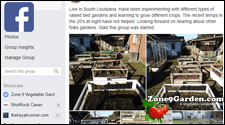| Name |
Damage |
Control |
| Aphids |
Eats plant juices causing wilting and transfers
diseases |
Natural: Lady Bugs
Chemical: Malathion |
| Armyworm |
Eats leaves and shows up in large numbers |
Natural: Birds
Chemical: Pyrethroids |
| Bean Leafroller |
Eats leaves of legumes and uses them as shelter |
Natural: Polistes spp
Chemical: Pyrethroids |
| Cabbage Looper |
Eats leaves of many plants and leaves many holes |
Natural: Trichoplusia ni
Chemical: Malathion |
| Cucumber Beetle |
Larva eat stems and roots adults eat leaves of
many plants. |
Natural: Lady Bugs
Chemical: Pyrethroids |
| Diamonback Moth |
Eats all parts of plant but prefers near bud. |
Natural: Spiders and Wasps
Chemical: Not effective |
| Corn Earworm |
Bores into fruits and vegetables of many types |
Natural: Lady Bugs
Chemical: Pyrethroids |
| Flea Beetle |
Eats leaves, can kill seedlings. |
Natural: n/a
Chemical: Malathion |
| Hornworm |
Eat leaves, often superficially |
Natural: braconid wasp
Chemical: Pyrethroids |
| Leafminers |
Kills the leaves that they live in |
Natural: Parasitic Wasps
Chemical: Pyrethroids |
| Leafhoppers |
Kills leaves and causes leaf drop on many other
leaves |
Natural: Spiders
Chemical: Malathion |
| Pickleworm |
Bores into blooms and fruit of many vegetables |
Natural: Not effective
Chemical: Pyrethroids |
| Mexican Bean Beetle |
Shred leaves leaving a “Skeleton” appearance |
Natural: Birds and Toads
Chemical: Malathion |
| Cowpea Curculio |
Feeds on legume seeds inside the pods |
Natural: Red fire ants
Chemical: Not effective |
| Spider Mites |
Feeds on leaves often killing entire plant |
Natural: Lady Bugs
Chemical: Malathion (limited effectiveness) |
| Squash Vine Borer |
Bores into stems of plants causing dehydration |
Natural: Parasitic Wasps
Chemical: Pyrethroids |
| Thrips |
Eat blooms and young tender leaves |
Natural: Predatory Mites
Chemical: Malathion |
| Whieflies |
Suck Sap. Causing
dehydration and mold. |
Natural: Lady Bugs
Chemical: Soap |



Comment here